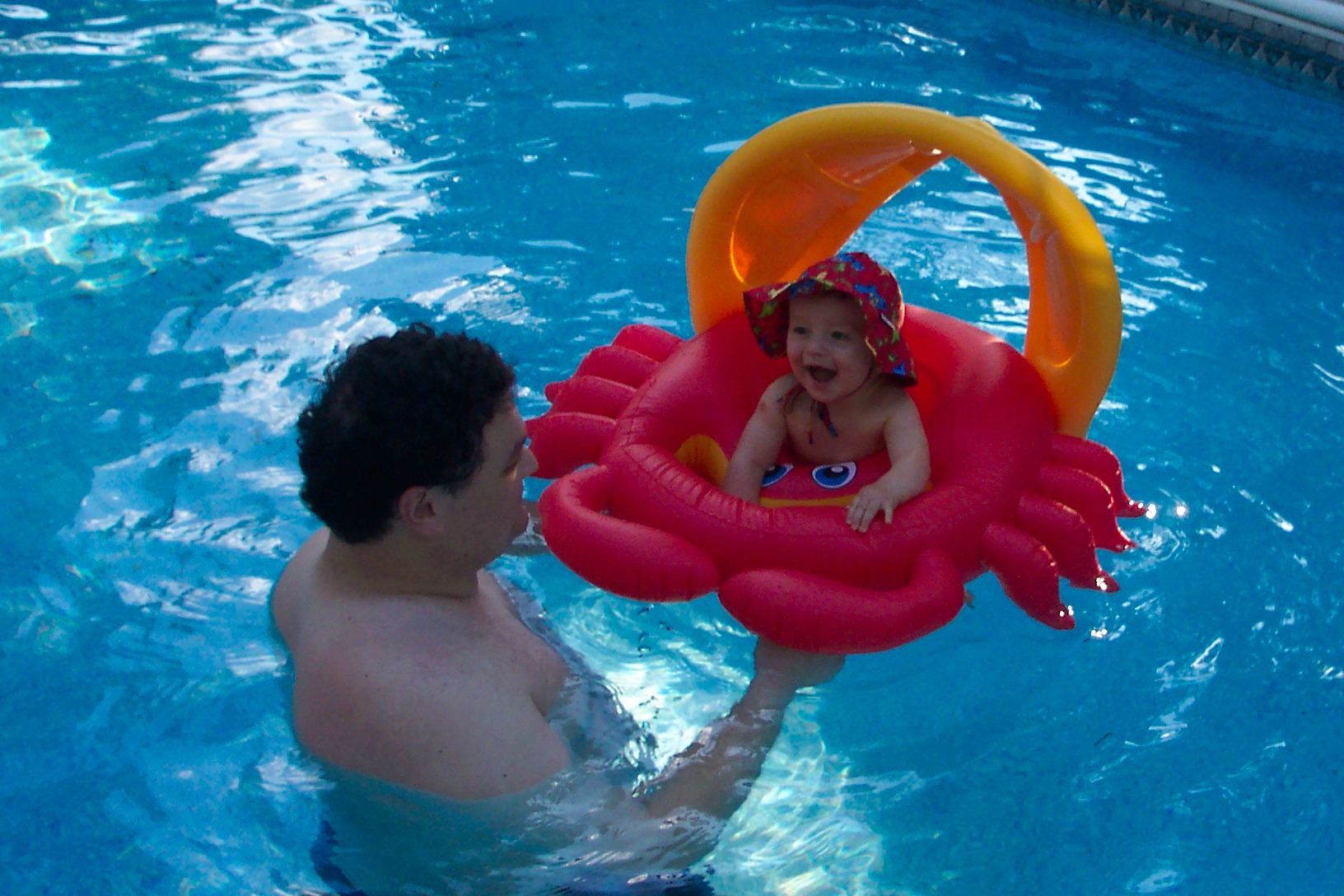How early can a baby be introduced to the water? Parents often ask this question, because they would like to take steps to allow their baby to enjoy being in the water. How safe is a chlorine maintained pool for a baby? Particularly if the parent is taking a baby swim class at a community pool, are there risks involved for the baby?
As described by CNN.com, the use of chlorine in the water of a swimming pool inactivates most of the disease-causing germs in water. That’s why drinking water contains chlorine, as well as 95% of the swimming pools in the United States. Chlorine prevents the risk of contracting waterborne illnesses. But every time a person gets into the water at a swimming pool, they add contaminants. Sweat, hair, urine, makeup, sunscreen, all of these combine with chlorine to form chloramines, which is what swimmers smell when they enter a pool area. A strong smell indicates too many byproducts of the disinfectants.
An indoor pool creates an additional danger because of the enclosed environment. With a lot of vigorous activity taking place in the pool – swimming, kicking, playing – it transfers the chemicals to the air and be inhaled. One study by a professor of toxicology, a leading researcher on aquatic environments, substantiated earlier studies claiming a link between swimming in indoor chlorinated pools and asthma and bronchitis in children. His study showed airway and lung permeability changes in children who had participated in an infant swimming group.
With these substantiated risk possibilities, it is important for parents to decide wisely in introducing their infant to a chlorinated pool. Ensure that chlorine levels are properly maintained. If the parent can smell chlorine immediately upon entering the pool area – assume it’s too strong for the baby.
















